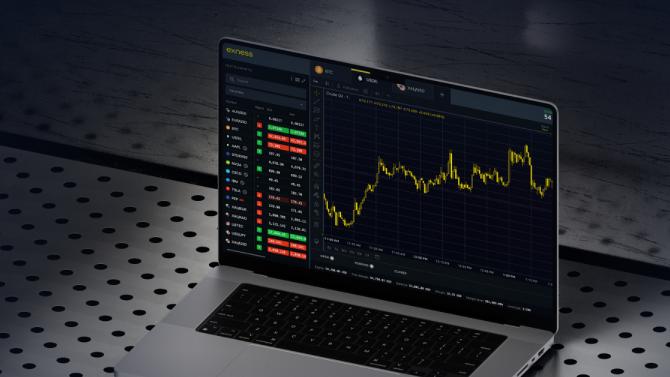How will escalating US tariffs and ongoing trade disputes reshape investment strategies and market dynamics in Asia?
Market insights by Krisada Yoonaisil, Financial Markets Strategist at Exness.
The possibility of a trade war, once a looming threat, is now a stark reality. US tariffs have been enacted, sending ripples across global economies, with Asian markets finding themselves at the epicentre of the turbulence. For traders and investors, managing this volatile new reality requires three things: a keen understanding of the immediate impacts, a strategic approach to mitigating risks, and finally, uncovering potential, albeit unconventional, opportunities.
How things stand: A quick breakdown
Asian stock markets have reacted sharply to the imposition and escalation of US tariffs. Recent announcements, such as the doubling of tariffs on steel and aluminium, have seen markets like Hong Kong, Tokyo, Sydney, and Singapore register significant declines. The Shanghai Composite, Hong Kong’s Hang Seng, and Japan’s Nikkei 225 have all experienced precipitous drops, with the Hang Seng falling over 13% and the Nikkei down 7.8% on particularly volatile days, described by some analysts as a “bloodbath.”
These are not isolated incidents but reflect a broader trend of heightened volatility and investor anxiety. In May 2025, Asian factory activity shrank as US tariffs and softer demand in China took a heavy toll on companies, painting a darkening outlook for a region once known for rapid growth.
The core of the issue lies in Asia’s reliance on exports, particularly to the US. Manufacturing hubs in countries like Japan, South Korea, Vietnam, Cambodia, Thailand, and China face significant headwinds. Tariffs ranging from 10% to as high as 54% (for China) on a wide array of goods, including textiles and automobiles, directly impact these economies.
Even a temporary pause in the US-China trade war, which saw the US agree to cut tariffs on Chinese imports from 145% to 30% and China reciprocating cuts, brought immediate relief and a rally in Asian markets, underscoring their sensitivity to trade developments. However, the underlying tensions and the “permanent” nature of this new era of elevated tariffs suggest that such relief may be fleeting. Chinese economic policy uncertainty, in particular, has been identified as a primary driver of Asian stock market volatility.

Navigating the storm: Strategies for traders
In such an uncertain environment, a reactive approach is insufficient. Traders need to consider a diversified strategy, looking beyond traditional assets and understanding the unique characteristics of alternatives.
Diversification through indices and value strategies
One fundamental approach to managing heightened risk and volatility is diversification, and stock market indices offer a pathway to achieve this. Indices are collections of stocks that can average out the idiosyncratic risks of individual companies.
Key Asian Indices to consider:
- NIFTY 50 (India): Represents 50 of the largest companies across 14 sectors on India’s National Stock Exchange, offering a broad view of the Indian market.
- Nikkei 225 (Japan): A price-weighted index of 225 companies on the Tokyo Stock Exchange, heavily influenced by Japan’s export-oriented economy. Given Japan’s manufacturing contraction due to US auto tariffs, this index requires careful monitoring.
- Hang Seng Index (Hong Kong): Tracks 50 of the largest companies on the Hong Kong Stock Exchange. It is often seen as a barometer for sentiment towards China and the broader Asian region. It has shown significant sensitivity to trade news.
- Straits Times Index (Singapore): Comprises 30 top companies, with a focus on finance, real estate, and telecommunications.
- KOSPI (South Korea): Like Japan, South Korea’s export-reliant economy, particularly in automobiles and technology, makes its main index vulnerable to tariffs.
- Shanghai Composite (China): Tracks all A and B shares on the Shanghai Stock Exchange and is a key indicator for mainland China’s market, which has been directly impacted by US tariffs and retaliatory measures.
While these key Asian indices provide avenues for traditional diversification, the macroeconomic uncertainties, like trade wars that necessitate careful risk management, can also impact these broad market indicators.
For example, the Shanghai Composite Index recently reflected such influences when it rose 0.21% to 3,387 on 21 May 2025, marking a second consecutive session of gains in a one-week high. This movement occurred as market sentiment turned positive following the central bank’s first cut to key lending rates in seven months, a measure intended to support growth and buffer against trade-related risks. Could this be a foreshadowing of what’s to come? Time will tell.
In such an environment, where established financial systems and markets experience volatility, investors often look beyond conventional assets. This search for alternative stores of value or hedging instruments leads to an examination of decentralized options, such as cryptocurrencies, which possess different characteristics and potential responses to global economic shifts.
Bitcoin: A decentralized hedge?
During times of macroeconomic uncertainty, investors often seek unconventional assets. Bitcoin, with its decentralized nature, is often touted as being less susceptible to the direct policy changes of individual governments, unless those changes specifically target cryptocurrencies. However, the relationship isn’t straightforward.
Trade wars can introduce several risks for bitcoin:
Increased volatility and flight to safety: If a trade war triggers a global recession, investors might flee riskier assets, including bitcoin, for safer havens like cash or government bonds. Instead of acting as a safe haven, bitcoin prices could fall in tandem with equities. Indeed, US trade war tariffs have triggered volatility in crypto markets, with bitcoin experiencing drops before rebounding. Initially, as trade war rhetoric emerged in January 2025, bitcoin’s correlation with equities turned negative, but as risk-off sentiment grew, this correlation climbed.
Regulatory scrutiny: Governments engaged in trade disputes may tighten controls on cross-border financial flows, potentially targeting cryptocurrencies to prevent tariff evasion or capital flight.
Impact on mining: Trade wars can disrupt supply chains for essential mining hardware, like GPUs and ASIC chips, often manufactured internationally. Tariffs on these components can increase costs for miners, squeezing profitability, especially when combined with bitcoin price volatility and increasing network difficulty. Recent US trade policies, for example, have reportedly contributed to a historic “hashprice” drop of 40 USD-50 USD per petahash per second (PH/s) due to steep tariffs on Chinese imports, including mining hardware.
Despite these risks, bitcoin has shown resilience at times, holding steady or rebounding when traditional assets faltered during trade policy shocks. Its long-term correlation with equities and gold has fluctuated, suggesting a degree of independence.
Historically, bitcoin has shown mixed reactions to trade war events. For example, during the early stages of the US-China tariff tension at the beginning of the year, bitcoin’s price dropped sharply by over 13%, mirroring risk-off sentiment in equities. More recently, the easing of trade tensions, like the US-China tariff truce in May 2025, coincided with bitcoin rallying above 105,000 USD, while equities also rose, indicating periods when bitcoin moves in tandem with stocks but can still diverge based on macroeconomic factors.
The key to bitcoin reasserting itself as a safe-haven asset lies in its ability to maintain a low correlation with equities, particularly in an economic environment marked by protectionism and uncertainty. In the short term, higher US tariffs could mean increased inflation, weaker economic growth, and volatility in bitcoin. In the long term, its role as a hedge could strengthen if tariff policies lead to sustained economic instability.
Oil: Fueling an alternative path?
Oil markets are also significantly impacted by trade wars in complex ways. Escalating trade tensions, particularly between the US and China (the world’s second-largest oil consumer), can dampen global economic growth forecasts, leading to reduced oil demand and lower prices.
The International Energy Agency (IEA) has already cut its 2025 global oil demand growth forecast, citing US tariffs and retaliatory measures. It predicts the slowest growth in five years. Crude oil prices have previously slipped significantly after China implemented retaliatory tariffs, with fears that a slowdown in the Chinese economy could trigger a global oil price crash.
To give you some context, the IEA now forecasts an annual global oil demand increase of just 730,000 barrels per day for 2025, a downward revision of 300,000 barrels per day from previous estimates due to escalating trade tensions. Brent crude futures dropped to around 64 USD per barrel in early April 2025, representing a 12% year-to-date decline and the lowest level in four years.
If former President Trump’s promise to ramp up US oil production materializes, this surge in supply could put downward pressure on global oil prices, potentially offering a selling opportunity for traders anticipating this outcome.
However, the IEA noted that despite calls to “drill baby drill,” activity in the US oil sector might decrease due to the impact of tariffs and lower prices. The outlook for 2025 oil markets is characterized by divergent narratives, with uncertainties amplified by potential US policy shifts and their impact on both demand and supply.
Expect continued turbulence
The ongoing trade war signals a period of sustained uncertainty for Asian stock markets. While temporary truces may offer a brief respite, the fundamental disagreements and protectionist stances suggest that volatility will persist. Asian economies, with their strong export orientation, remain particularly vulnerable to shifts in US trade policy and the broader global economic slowdown these tariffs might induce.
Traders must remain agile, informed, and strategically diversified. While traditional safe havens and defensive stock picking have their place, exploring alternatives like bitcoin and commodities such as oil, with a clear understanding of their unique risk-reward profiles in a trade war context, may offer avenues to navigate the choppy waters ahead.














